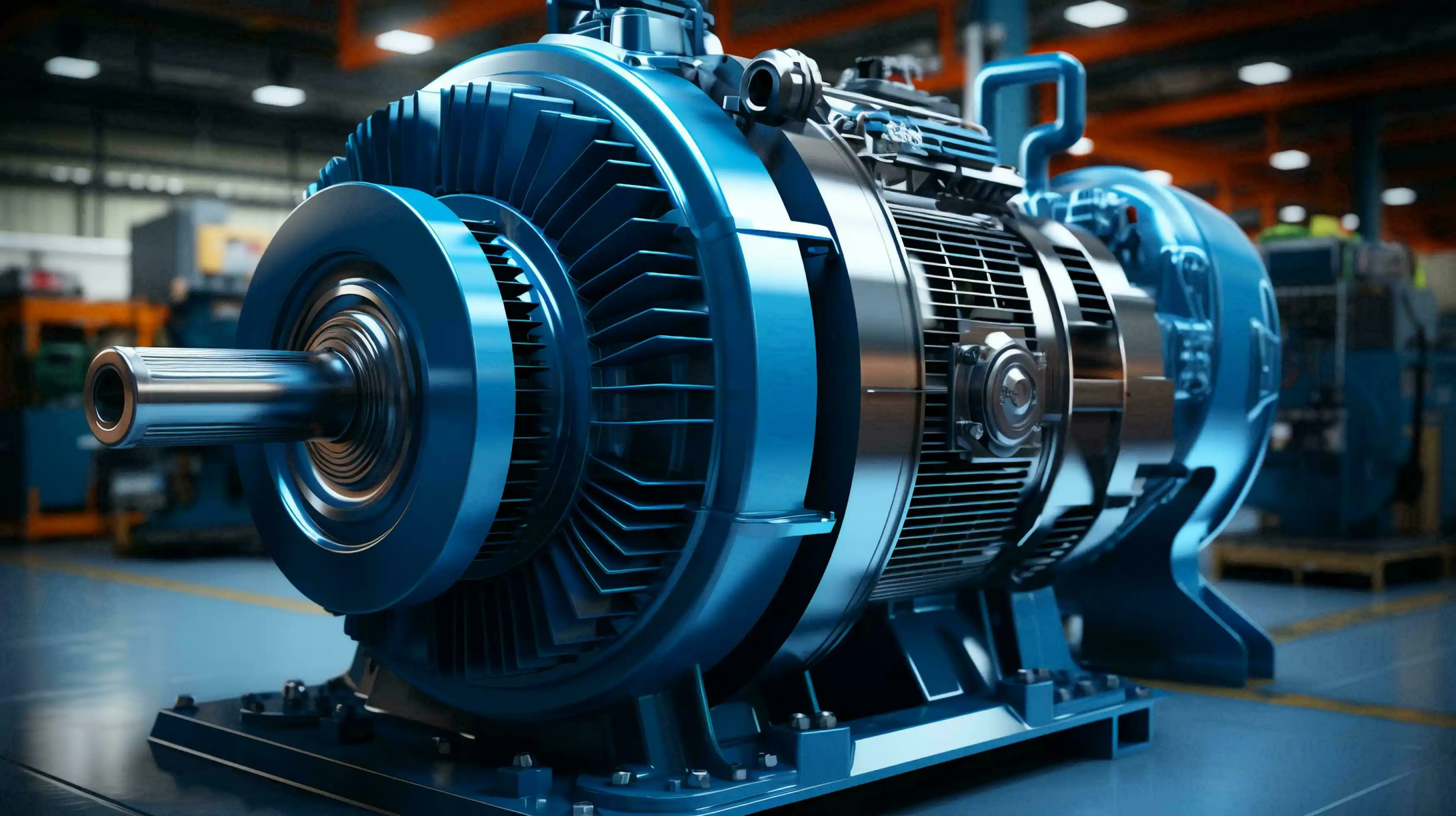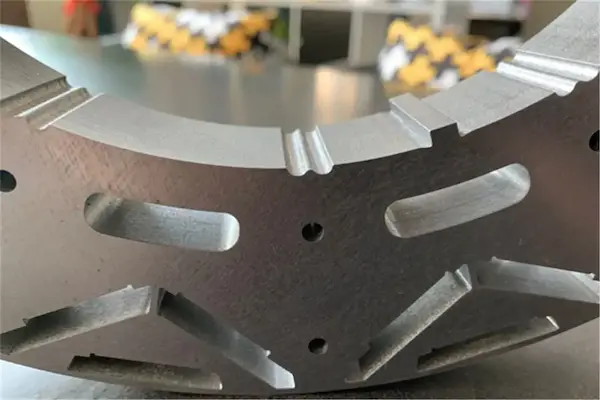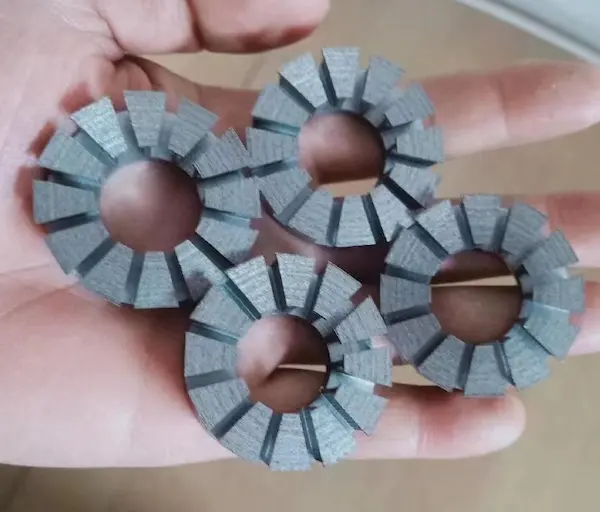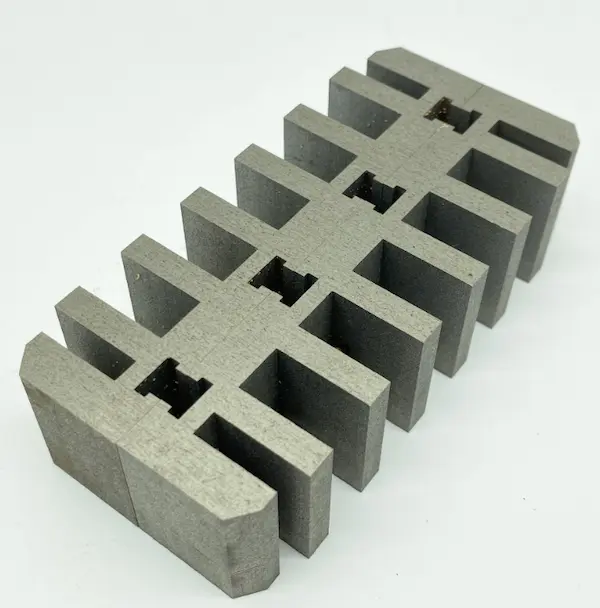Youyou is a leading self-bonding motor lamination manufacturer in China. With over 10 years of experience in lamination manufacturing, we specialize in producing high-quality self-bonding motor laminations (both stators and rotors) to meet customers' specific requirements.
In the rapidly evolving world of electric vehicles (EVs) and high-efficiency motors, self-bonding technology in motor lamination stacks stands out as a game-changer. This innovative approach is revolutionizing the way motor laminations are designed and manufactured, significantly improving motor performance and efficiency.
Essentially, bonding technology involves a unique method of layering and bonding thin sheets of metal together to form the core of an electric motor.
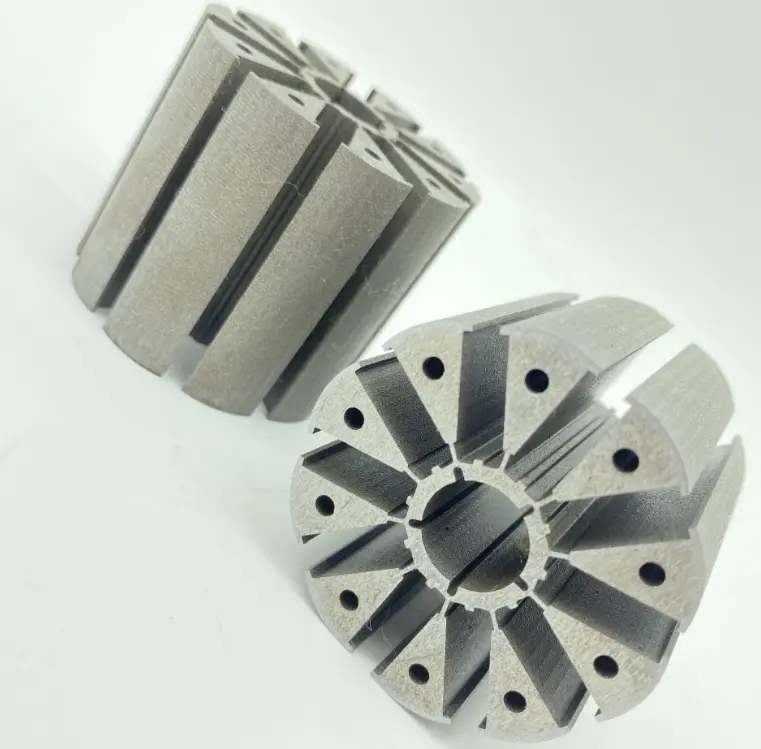
Basic Steps Of Self-Bonding Motor Lamination Stacks
In the field of electric motor manufacturing, self-bonded motor lamination stacks stand out for their unique structure and efficiency-enhancing properties. The core of these lamination stacks consists of multiple layers of electrical steel, which is known for its high magnetic permeability and low iron losses. The self-bonding process generally involves the following steps:
Material Selection
Choosing the right grade of electrical steel is crucial. This material must exhibit excellent magnetic properties and be compatible with the bonding process.
Coating Application
A thin layer of bonding material, often a specialized resin, is applied to the steel sheets. This coating is key to the self-bonding process.
Stacking
The coated sheets are precisely stacked, ensuring alignment for optimal magnetic performance.
Heating and Pressing
The stack is then subjected to heat and pressure. This activates the bonding agent, fusing the layers into a solid, cohesive unit.
Cooling
After bonding, the stack is cooled under controlled conditions to solidify the bond and maintain the desired shape.
This innovative bonding method has improved motor performance in several aspects. Firstly, it reduces the air gap between the laminations, thereby minimizing the energy loss caused by eddy currents to the greatest extent possible. Secondly, the absence of traditional fasteners or welds eliminates additional energy losses and mechanical weaknesses. Finally, the streamlined manufacturing process not only makes the motor more efficient, but also more compact and lightweight, making it an ideal choice for a wide range of applications where space and weight are key considerations.
Applications Of Self-Bonding Motor Lamination Stacks
Self-bonding motor lamination stacks have revolutionized multiple industries with their efficiency and performance enhancements.
Electric Vehicles
Lamination cores apply in EV traction, EV driven, electric bikes, motorcycles, scooters, and hubs.
Automotive
Our stator rotor core applies to the window, sunroof, wiper, blower, ignition, water pump, seat, EPS, starter, and traction.
Transportation
Motor core lamination applied to vehicles, passenger cars, high-speed rail, subway, and heavy trucks.
Self-bonding motor lamination stacks have revolutionized multiple industries with their efficiency and performance enhancements.
Advantages Of Self-Bonding Motor Lamination Stacks
Self-bonding in motor design brings a host of advantages, crucial for modern engineering needs.
High Strength
The adhesive-bonded laminations have an excellent tensile shear strength of 14-18N/mm², making them strong enough for secondary operations such as turning, grinding and drilling. This high strength ensures durability and longevity, which is critical in the demanding environment in which electric vehicle motors operate.
High Precision
The self-bonded lamination stacks offer significantly improved surface contact uniformity, with more than 0.50 improvement in flatness and perpendicularity. This precision (measured with a feeler gauge of just 0.05mm thick) ensures optimal performance and alignment inside the motor, resulting in smoother operation and reduced wear.
Reduced Vibration
With these lamination stacks, motor vibration levels can be reduced by 0.05. Reduced vibration not only helps the motor run more stably and efficiently, but also improves the overall driving experience by minimizing vibrations felt inside the vehicle, resulting in a smoother, more comfortable ride.
High Power Density
These stator and rotor lamination stacks offer higher power density, smaller size and lower weight, while maintaining a high stacking factor of over 0.985. This feature is essential for compact and powerful motor designs, allowing for more efficient use of space and materials in electric vehicles.
Reduced Noise
With the self-bonding stacks, noise is significantly reduced by 5dB. The reduction in noise emissions is particularly beneficial in urban environments, where noise pollution is a growing problem. Quieter motors help make electric vehicles more comfortable and less disruptive on the road.
Cooling
The enhanced thermal conduction in these stacks allows for optimal axial heat transfer, effectively reducing motor temperatures by 5-10°C. This improved thermal management is essential to maintain motor efficiency and prevent overheating, thereby extending the life of the motor and ensuring consistent performance under a wide range of operating conditions.
Flexible Design
The increased strength of the self-bonding lamination stacks enables more flexible and innovative design options, including smaller magnet bridge designs of 0.25-0.50mm. This flexibility opens up new possibilities in motor design, allowing engineers to create more efficient and compact motors for specific applications and requirements.
Improved Efficiency
Motors equipped with these laminations have a 0.05 increase in torque with a similar increase in efficiency. This improvement is critical for electric vehicles, as every increase in efficiency means better performance, longer driving range and lower energy consumption, making the vehicles more attractive and practical for consumers.
High Energy Efficiency
The elimination of flux blockage and a 0.15~0.30 reduction in iron losses results in significant energy savings. This efficiency not only extends battery life, but also reduces overall energy consumption. In addition, the reduced need for insulating varnish contributes to both cost savings and benefits the environment.
High Cleanliness
The high cleanliness of the self-bonding lamination stack improves motor performance and extends its service life. This cleanliness is essential to maintaining the integrity of motor components, ensuring they function optimally over the long term. Cleaner motors are more reliable, providing consistent performance and reducing the need for frequent maintenance or replacement.
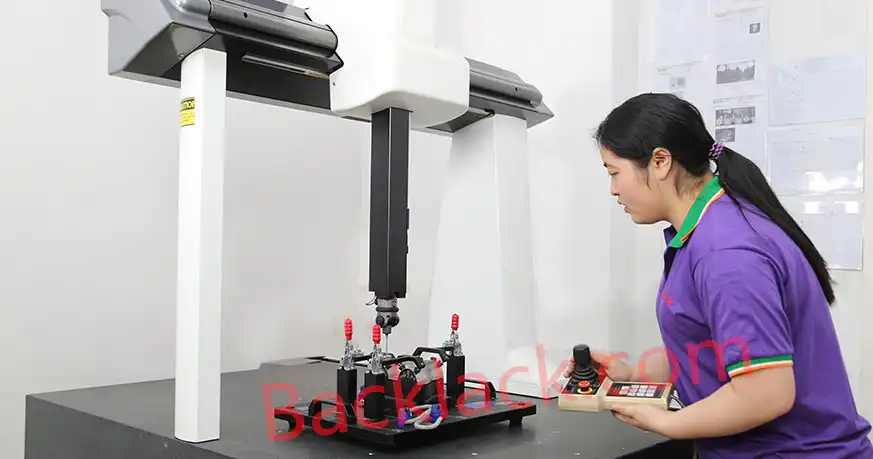
Conclusion
Self-bonding technology in motor lamination stacks is a beacon of innovation in the electric vehicle (EV) industry. Its ability to increase motor efficiency, reduce noise and vibration, and improve thermal management marks a major step forward in motor design. The compactness and precision it offers are essential to meeting the evolving demands for more efficient and sustainable electric vehicles.
As this self-bonding lamination technology continues to advance, we can expect even greater improvements in motor performance and wider use in a variety of applications. Self-bonding technology is more than just a current trend; it is a key component in shaping the future of electric vehicles.
Other Stacking Techniques For Electrical Steel Lamination Stacks
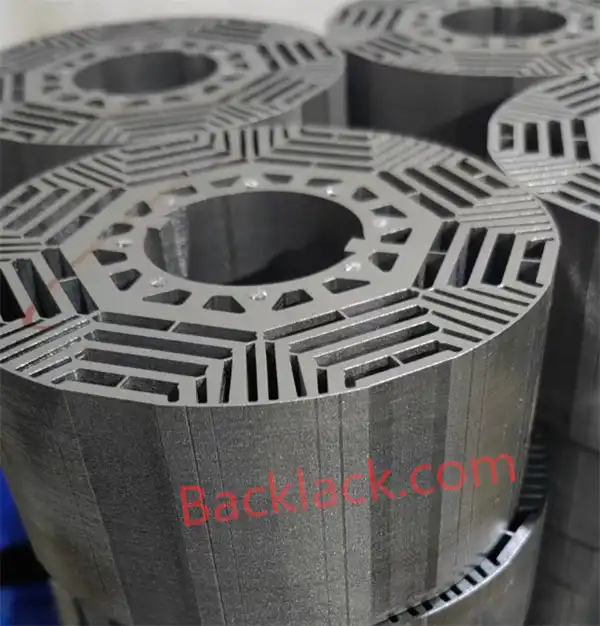
Riveting
Riveting uses mechanical fasteners to hold the laminations together. This method is reliable and easy to implement but can add weight and create stress points within the stack.
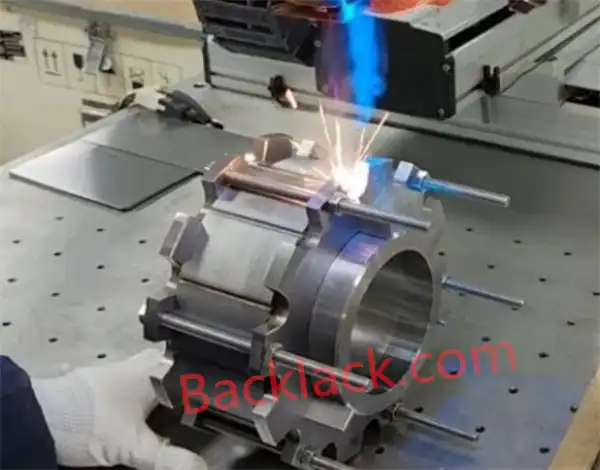
Laser Welding
This technique uses a high-powered laser to weld the laminations together at specific points. Laser welding provides a strong bond and precise alignment but can introduce localized heating.
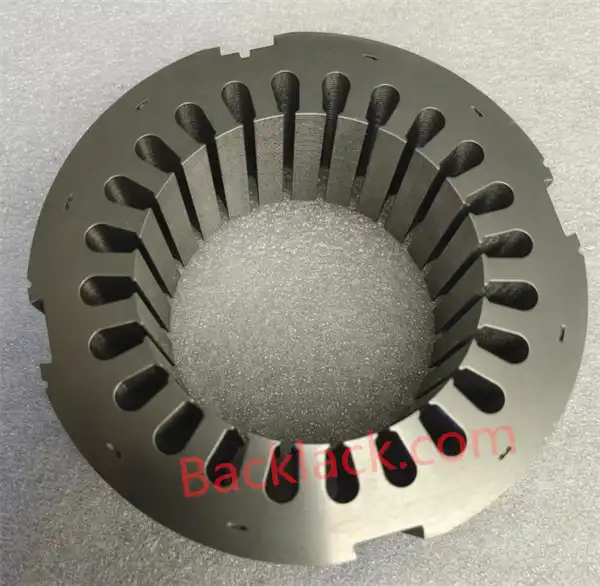
Interlocking
Interlocking involves creating tabs and slots on the edges of the laminations, allowing them to snap together without the need for additional bonding agents.
FAQS
What is self-bonding bonding different from traditional adhesive bonding?
Self-adhesion involves integrating the adhesive material into the laminate itself, allowing bonding to take place during the manufacturing process without the need for additional adhesives. This results in a seamless and long-lasting bond.
What Are The Adhesive Materials Of Self-Bonding Motor Core?
The adhesive materials of self-bonding motor cores are typically EB540, EB546, EB548, EB549, and EB549 fast.
EB549 and EB549 fast are primarily used in new energy vehicle drive motors and small to medium-sized motor cores, providing excellent performance and reliability in these applications.
How To Order Motor Laminates?
You can send your message to us via email, such as design drawings, material grades, etc. Our motor core orders are no matter the size, even if it is 1 piece we can do.
How Do Self-Bonding Motor Laminates Compare To Conventional Bonding Methods?
The laminations use bonding varnish/backlack to bonded to create a stable core. Unlike traditional methods that rely on interlocking teeth or welding points to secure laminations, This bonding lamination technology is used to reduce interlaminar loss and corrosion.
How Long Does It Usually Take You To Deliver Your Core Laminates?
Our delivery time for motor laminates can vary based on several factors, including order size and complexity. Commonly our lamination prototype lead time is 7-20 days. The mass production of rotor and stator core stacks time is 6 to 8 weeks or more.
Applications Of Self-Bonding Motor Laminations
Self-bonding lamination stacks are most commonly used in new energy vehicle motors. They are also ideal for various other applications, including industrial motors, traction motors, renewable energy systems, and high-performance electric motors, offering enhanced efficiency, reduced noise, and improved durability across different sectors.
How Do Self-Bonding Motor Laminates Work?
Lamination bonding represents a groundbreaking advancement in motor manufacturing. Self-bonding motor laminations work through a heat treatment process that activates their bonding properties. When subjected to heat, the laminations bond together at the molecular level, creating a seamless and strong connection.
Where Is The Bonded Motor Stack Applied?
Bonded motor lamination stacks are applied in various industries and applications due to high efficiency, compact design, and precision. Mainly including electric vehicles, drones, robotics, etc.
Can Bonding Laminations Be Used For Segmented Stators In Electric Motors?
Yes, bonding laminations can be used for segmented stators, providing precise bonding between individual segments to create a unified stator assembly.
How Do Self-Bonding Motor Laminates Work?
Lamination bonding represents a groundbreaking advancement in motor manufacturing. Self-bonding motor laminations work through a heat treatment process that activates their bonding properties. When subjected to heat, the laminations bond together at the molecular level, creating a seamless and strong connection.
What Manufacturing Techniques Are Used For Motor Laminated Cores?
Besides stamping and laser cutting, techniques like wire etching, roll forming, and powder metallurgy may also be used. The motor lamination secondary process includes stacking, electrophoresis, insulation coating, winding, and annealing.
What Types Of Motors Can Benefit From Self-Bonding Motor Laminates?
Self-bonding motor laminations can benefit a wide range of motors, including brushless DC motors, permanent magnet synchronous motors, and induction motors, among others.
Can Self Bonding Stack Laminations Be Customized?
Yes, self-bonding motor components can be customized to meet specific requirements and optimal motor performance, such as size, shape, and magnetic properties. This allows for greater flexibility in motor design and optimization.
What Are The Advantages Of Bonding Technology Compared To Other Stacking Methods?
Unlike traditional methods that rely on interlocking or welding points to secure laminations, This bonding lamination technology is used to reduce interlaminar loss and corrosion.
Can Self Bonding Stack Laminations Be Customized?
Yes, self-bonding motor components can be customized to meet specific requirements and optimal motor performance, such as size, shape, and magnetic properties. This allows for greater flexibility in motor design and optimization.
Enhance Your Motor Efficiency With Our Self-Bonding Laminations!
Ready To Connect With YOUYOU’s Expert Team?
Recommended For You


